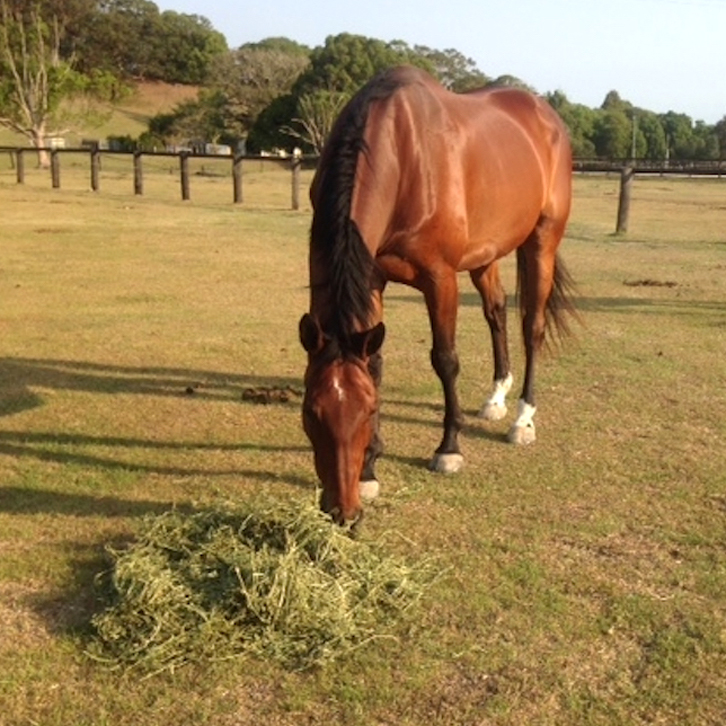The domestication of horses poses unique challenges for digestive health, writes DAWN BLACKWELL, who gives us an explanation of our horses digestive systems.
If you think about the digestive process, digestion begins with chewing and the essential production of saliva.
Your horse feels with her whiskers; grasps, bites, chews and passes a moist bolus of food down the oesophagus. Slowly. If not, choke may occur.
In a horse, it can only go one way as there is a flap preventing food coming back up and so off to the stomach it goes! In the stomach the food is held for around 30 minutes. Horses produce more saliva when their head is low, and it is absolutely the best position for their neck and back, leading to more correct muscle development (as opposed to that which is created by pulling hay from a net). They also breathe less dust and mould into their lungs. With the challenges posed by the drought, the feeding of hay will prevent the build-up of sand, but try not to feed on sandy/dusty areas.
Feed off the ground and always have water available
The stomach is made up of two parts; but for simplicity’s sake, all we need to know is that the PH level and its contents are crucial in order to avoid digestive upset or ulcers. ¯The stomach is happiest with some food in it, but definitely no more than two/thirds full, which most people don’t realize. Ideally the majority of the food should be fibre, because if not it’s possible for food to pass into the small intestine before the enzymes have finished their work. This can lead to toxins passing into the blood stream.
For more on this important topic, plus other great content, come and join the HorseVibes tribe!



